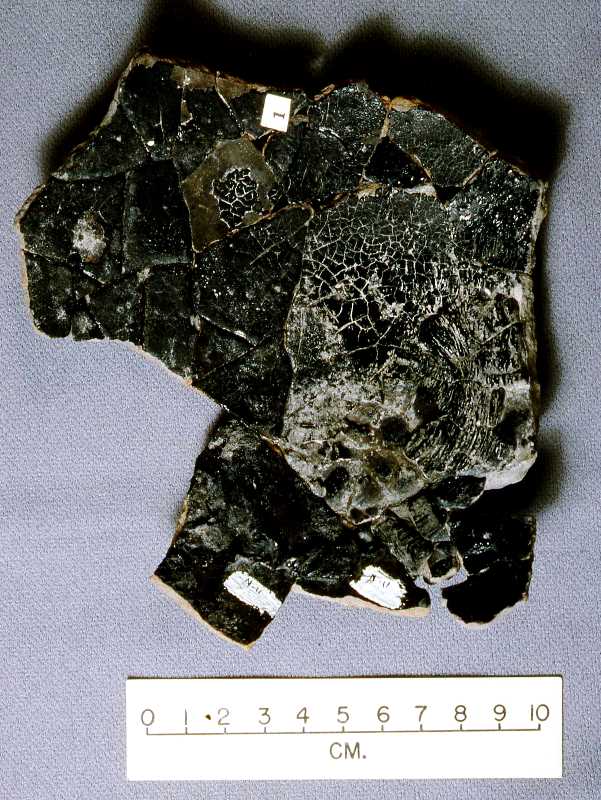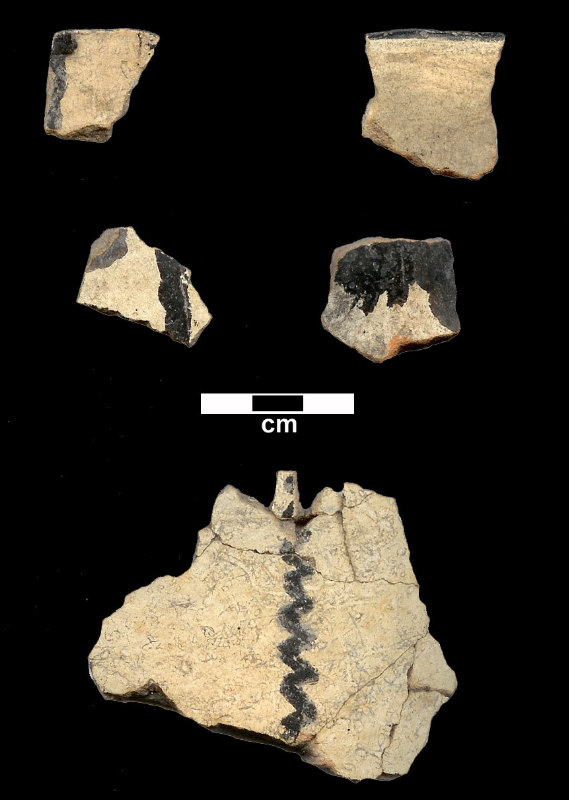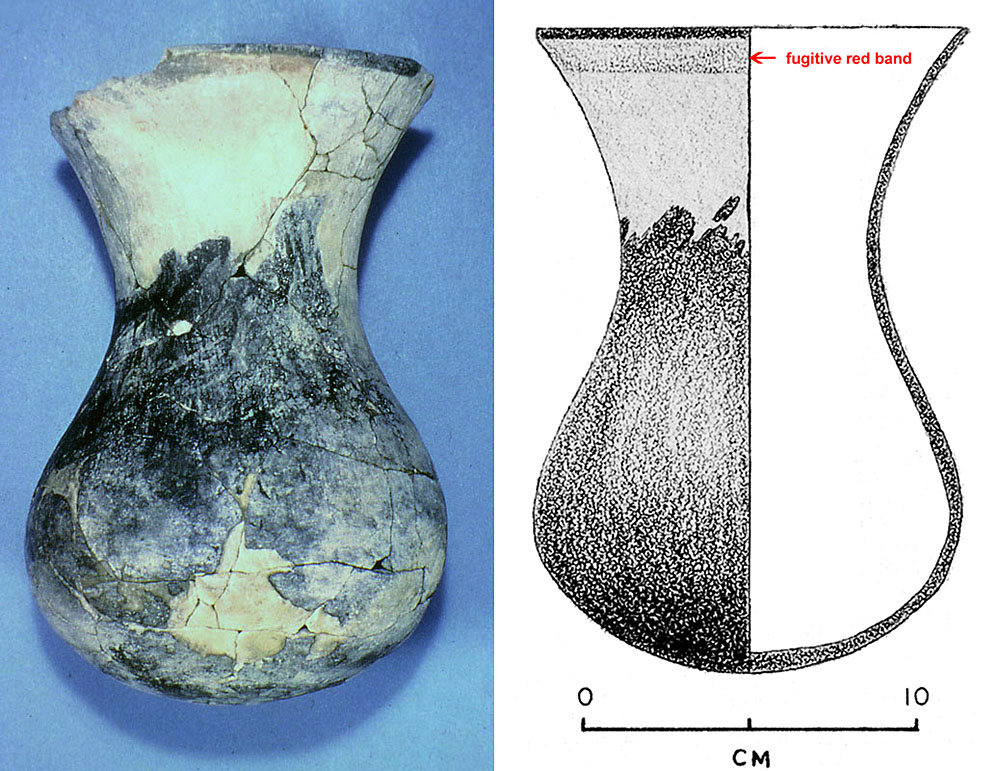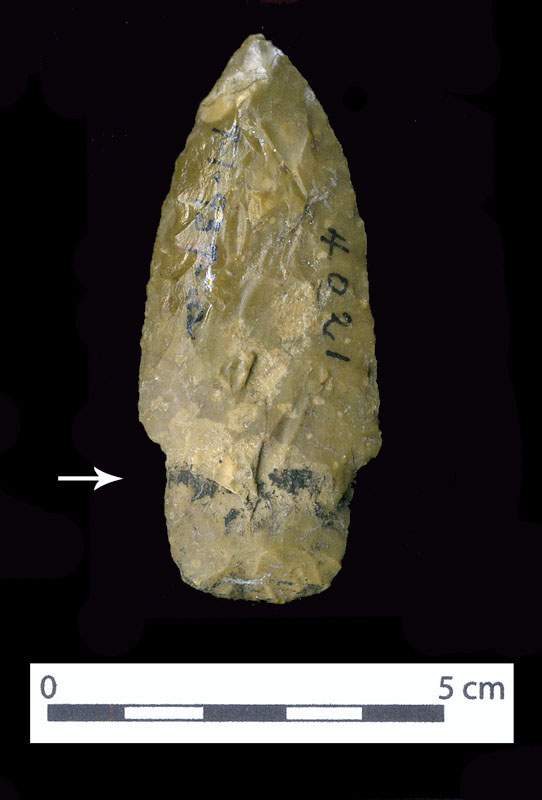Asphaltum
Asphaltum is a natural tar-like substance that washes ashore from oil seepages beneath the Gulf of Mexico The use of asphaltum by aboriginal peoples is well documented in early historic accounts and abundant archeological evidence extends its use well back into the prehistoric era. Asphaltum was the caulk, glue, and paint of the coastal natives: when heated, the viscosity decreases and the molten asphaltum can be applied, cooling to form a jet-black, waterproof coating, an adhesive or a decorative paint.
The best-known use for asphaltum is on the Rockport earthenware pottery made by the Karankawa Indians and their prehistoric ancestors of the central Texas coast beginning around A.D. 1100. Rockport potters applied asphaltum as a molten, decorative paint on already-fired gray sandy paste pottery. Rockport Black-on-Gray pottery designs elements were mainly geometric and wavy lines, dots, and triangles. Although few intact vessels have been recovered, reconstructed designs from the large sample of Rockport pottery recovered from the Guadalupe Bay site show many different design variations on the asphaltum-painted theme. In latest prehistoric times, after A.D. 1400, the asphaltum decoration was applied to off-white slipped pottery, resulting in the very striking ware known as Rockport Black-on-White.
Rockport potters also used asphaltum in two other ways. Cracked vessels were mended by applying asphaltum to cracks, mainly those along the rim of the earthenware vessels. In other cases, presumably for vessels meant to hold liquids, the vessel interiors were coated with a thin layer of asphalutm. This use of asphaltum on ceramic vessels distinguishes the central coast of Texas from the upper coast areas where asphaltum was rarely used for ceramic decoration, coating, or mending. Rockport pottery is also seldom found inland farther than about 30-40 miles, within the historically known territory of the Karankawa.
Asphaltum was also applied to various other materials beginning thousands of years before pottery was made in the region. In fact, the only direct evidence we have of prehistoric basketry comes from pieces of asphaltum bearing basketry impressions, showing that the tarry substance was applied to the interior of baskets to ensure a water-tight seal. Asphaltum with basketry impressions has been documented in Aransas focus (Late Archaic perhaps as early as 1000 B.C.) sites along the central coast. Since there is no evidence of pottery in the Aransas focus, baskets lined with asphaltum could be seen as the technological predecessor of pottery. Some archaeologists have argued that this evidence refutes the fact that ceramic technology diffused from southeastern Louisiana or northern Mexico.
Aside from pottery, the most common use of asphaltum along the coast, and inland as well, was as an adhesive to haft projectile points and other stone tools onto wooden dart shafts or handless. One of the earliest known examples of this pattern is a Late Paleoindian Clear Fork tool (likely an adze used for woodworking) found at the Johnston-Heller site in Victoria County near the Guadalupe River some 90 miles inland from the Gulf beach line. As reported by Jacob Bourbon, the artifact has traces of asphaltum adhering to the edges of the stem and evidence of reworking to better seat the tool into a wooden haft.
The practice of using asphaltum as a hafting glue became common in Late Archaic times after around 1000 B.C. at about the same time that the modern sea level was reached and the modern barrier islands and bay stems were well developed. Numerous examples of dart points with asphaltum traces dating to the Late Archaic period were recovered from the Morhiss Mound site on the lower Guadalupe River near Victoria. A mass of asphaltum weighing over two pounds found at Morhiss Mound shows that substantial quantities of this material were sometimes carried inland. The shape of the lumps suggests that the asphaltum had been transported from the coast in some sort of fiber bag or perhaps a basket.
Asphaltum was also used as a hafting glue on bone and shell artifacts. Several oyster shells found at Ingleside Cove (41SP120) were worked into hoes by puncturing a hole near the valve hinge and presumably hafting them to wooden handles using asphaltum and sinew or fiber cord. The Rockport phase sites of Kendrick Hill (41JK35) and Possum Bluff (41JK24) along the lower Lavaca River in the central coast have yielded gar scales with asphaltum traces, suggesting these were affixed to some sort of perishable material for reasons yet undetrmined.
Bone projectile points from the upper Texas coast often bear asphaltum residue. A peculiar object found in a grave at the Mitchell Ridge, a late prehistoric and early historic period site, is also made of asphaltum. The object, believed to represent a bloodletting device, is composed of a shaped piece of asphaltum with cotton rat teeth embedded in it.
Source
Calhoun, Cecil
1964 A Polychrome Vessel from the Texas Coastal Bend. Bulletin of the Texas Archeological Society 35: 205-211.
![]()
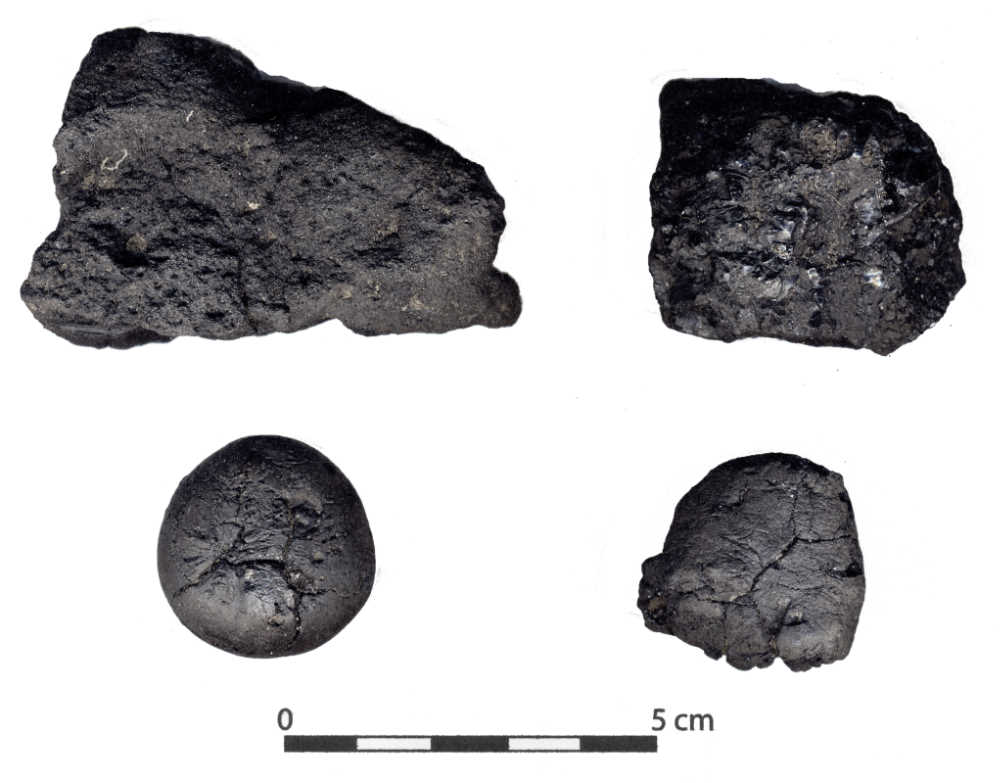
|
